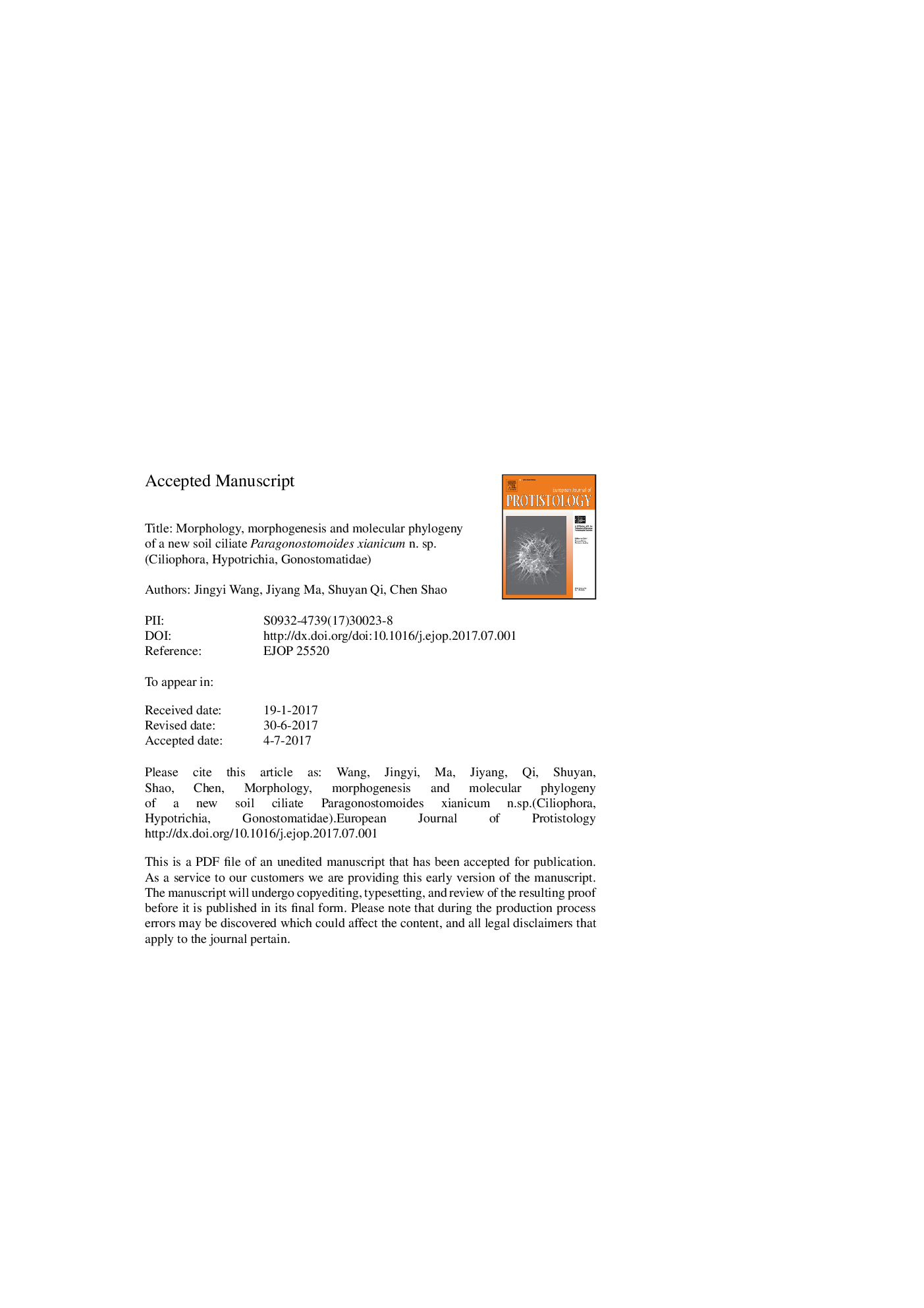| Article ID | Journal | Published Year | Pages | File Type |
|---|---|---|---|---|
| 8382780 | European Journal of Protistology | 2017 | 20 Pages |
Abstract
A hypotrichous ciliate, Paragonostomoides xianicum n. sp., was discovered in soil on the surface of the Xi'an Circumvallation, Xi'an, China. Its morphology and some major ontogenetic stages were studied and the phylogenetic position was estimated using standard methods Paragonostomoides xianicum n. sp. is characterized as follows: body size about 75-90 Ã 15-25 μm in vivo, elliptical and flexible; colourless mitochondrion-like cortical granules scattered throughout cell surface, about 0.8 Ã 0.6 μm in size; contractile vacuole positioned at mid-body; frontoventral row IV extends beyond buccal vertex and frontoventral row VI extends to about body end; frontoventral cirri not in pairs; transverse cirri absent; three caudal cirri; two macronuclear nodules and one to four micronuclei. The ontogenetic process in P. xianicum n. sp. is basically similar to that in Metagonostomum gonostomoidum and Gonostomum-species and featured by: frontoventral-transverse cirri develop in five-anlage pattern, the rearmost cirri generated in the two rightmost FV anlagen are not set off posteriorly (like an ordinary TC), as well as FVT-anlagen n and n-1 form in secondary mode in P. xianicum. Phylogenetic analyses based on small subunit ribosomal DNA sequence data reveal a close relationship of P. xianicum n. sp. with Cotterillia bromelicola and two Gonostomum-species.
Related Topics
Life Sciences
Agricultural and Biological Sciences
Agricultural and Biological Sciences (General)
Authors
Jingyi Wang, Jiyang Ma, Shuyan Qi, Chen Shao,
